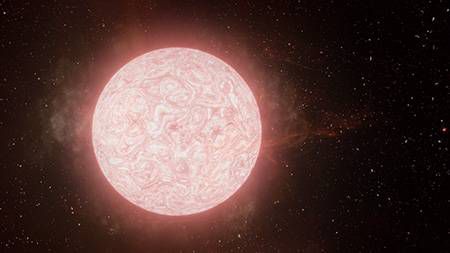HONOLULU — For the first time, astronomers were able to see a red supergiant star in its final death throes before it exploded, becoming a supernova.
The team of astronomers who made this new discovery published their findings in the Astrophysical Journal on Jan. 6.
"In this case, we were able to look back and see how this star lived before it died, which is just incredibly rare,” said Ryan Foley, an assistant professor of astronomy and astrophysics at UC Santa Cruz, who was a co-author and spoke to Spectrum News Hawaii. “Now, we have insight into the last few months of this kind of star before it explodes.”
Foley compared the team he worked with to crime scene investigators who arrive at the place where someone died, in this case, a stellar explosion or supernova, and are trying to connect the dead body back to the star that it was before exploding.
Using the Pan-STARRS telescope at Haleakala Observatory on Maui, the astronomers ran an automated survey of the sky known as the Young Supernova Experiment, which looks for exploding stars.
“It is kind of like looking things up on Google Maps,” said Foley.
The telescope looks at the sky over and over again, essentially making a flipbook of deep space. While most of the stars and galaxies don’t change for millions or billions of years, the survey notices when things do change, particularly stellar explosions.
During the survey, the Pan-STARRS telescope noticed a supernova, which was dubbed Supernova 2020tlf. The supernova was discovered in NGC 5731 galaxy about 120 million light-years away from Earth, which is home to billions of stars.
Looking at images taken of Supernova 2020tlf before it exploded, the astronomers were able to see that the star “was varying in brightness,” according to Foley. “That's something that we hadn't seen before.”
“Usually these kinds of stars are pretty stable,” said Foley. “A few months before it exploded, something else happened. This really was like the death throes of the star — something was going on that was signaling to us that it was about to explode.”
Next, the researchers used the Keck Telescope on Mauna Kea on Hawaii Island to look at the same spot in the sky. “We obtained a spectrum of this new supernova.”
The spectrum, which is what happens when light is filtered through a prism, helped the astronomers figure out the composition of the star.
“We were able to determine roughly what the composition of the supernova was and the composition to some degree of the material that it was running into. For instance, we were able to figure out that this supernova had a lot of hydrogen,” said Foley.
Knowing that the supernova was made up of hydrogen helped the researchers determine it was a red supergiant that had exploded. A red supergiant is a large star — it has a radius 1,000 times larger than the Sun, it is less common than smaller stars like the Sun, and it is largely made up of hydrogen.
“We were able to figure out that it was extremely young when we took our data and that it appeared to be interacting with its surrounding environment,” said Foley.
Learning that the supernova is very young was important because it meant that the red supergiant had just recently exploded.
Usually, when a supernova is discovered by a telescope, then it can be hard to determine what was happening to the star before it exploded, so this offered a unique view into a dying star.
“If you talk to the ancient Greeks, they would say that the heavens are unmoving and unchanging,” said Foley. “This is the direct evidence that that is not true — that the universe does change — so that's one of the reasons why it's so important.”
Foley also said that they hope to collect more data, and if it becomes conclusive that red supergiants always vary in brightness before they die, then it could become "an early warning system.” In other words, astronomers would be able to determine when a star might explode in a few months and start paying attention to it before it turns into a supernova.



